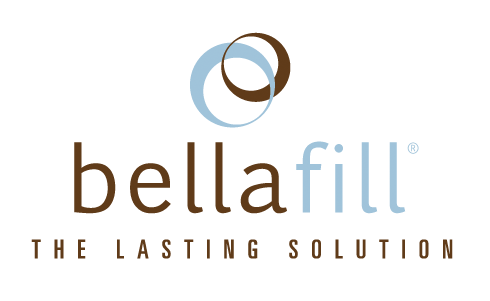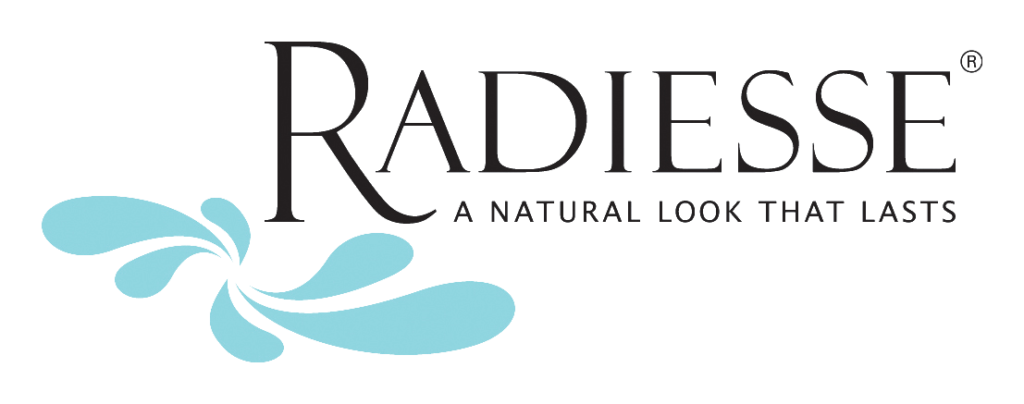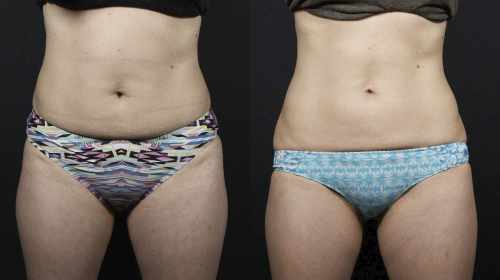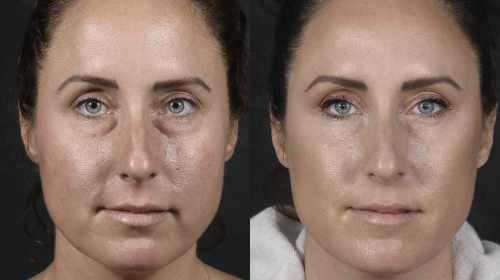Injectable fillers are also commonly referred to as dermal fillers. These incredibly popular office-based, medical spa treatments consist of a wide range of injectable products that help to rejuvenate the face and skin with minimal downtime. They are frequently called dermal fillers because the injection occurs at the deep dermal level of the skin, which helps to plump up the overlying soft tissue layer. By adding volume in this manner, wrinkles can be reduced and deep creases can be smoothed out very nicely in a completely non-surgical manner. In addition, these injectable fillers can often times be used to restore lost volume in regions of the face, such as the cheek. The end result of having injectable filler treatment is more youthful and rejuvenated appearance.
Juvederm® and Restylane®
Juvederm® and Restylane® are, by far, the most popular injectable fillers used in medical spas. These dermal fillers are both comprised of hyaluronic acid, which is a naturally occurring substance found throughout the human body. Hyaluronic acid functions by absorbing water and holding on to it tightly. By doing so, hyaluronic acid plumps up the surrounding tissue. This unique characteristic allows Juvederm® and Restylane® to get into the skin and fill out, or plump up, unwanted skin creases and wrinkles. For example, when Juvederm® or Restylane® are injected underneath the smile lines, or nasolabial folds as they are called, the crease softens as it becomes more and more shallow. The undesirable shadowing created by the deep smile line is reduced very effectively – making the patient look more rested.
The most common areas where we use Juvederm® and Restylane® include the smile lines, cheek, lower eyelid, lips, chin and jawline. In all of these areas, Juvederm® and Restylane® is injected to add desired volume and shape to the face. In the lower eyelid region, for example, hyaluronic acid injections can help plump out unwanted hollows – leading to less shadowing and more rested look around the eyes. In the lip, these same injections are used to create fuller, more shapely contours that are incredibly popular, especially amongst younger patients. Both products can be used to target specific skin wrinkles and creases as well.
One of the great things about injectable fillers like Juvederm® and Restylane® is the fact that they can be done in the office setting with very little downtime associated with the treatment. In fact, a great majority of dermal filler patients have less than 24 hours of swelling and/or bruising, which allows people to return to their normal activities in a short period of time.
Juvederm® and Restylane® Frequently Asked Questions (FAQ)
Do I need skin testing for Juvederm® and Restylane®? The answer is no. Since these products are a synthetic version of the naturally occurring hyaluronic acid already in your body, no skin testing is needed prior to injection. Although reactions have been reported, Juvederm® and Restylane® are among the most well-tolerated dermal fillers on the market today.
Does it hurt to have Juvederm® or Restylane®? There is usually only a mild discomfort associated with injectable filler treatment. Fortunately, Juvederm® and Restylane® contain lidocaine within the filler. So as the filler is being injected, the treatment areas become more and more numb.
Bellafill®
 Bellafill® is a much longer-lasting treatment option compared with any of the other dermal fillers. Like Juvederm® and Restylane®, Bellafill® can be used to treat unwanted wrinkles and skin creases as well as reshape facial areas like the cheek and jawline that need more volume. The main difference is that Bellafill® is non-absorbable – meaning the cosmetic results from Bellafill® treatment will last on the order of years. In fact, Bellafill® is the only FDA-approved filler that has a label that it will last 5+ years. In Dr. Hilinski’s experience, there are some patients who have sustained cosmetic improvements for upwards of even 10 years after Bellafill® injection.
Bellafill® is a much longer-lasting treatment option compared with any of the other dermal fillers. Like Juvederm® and Restylane®, Bellafill® can be used to treat unwanted wrinkles and skin creases as well as reshape facial areas like the cheek and jawline that need more volume. The main difference is that Bellafill® is non-absorbable – meaning the cosmetic results from Bellafill® treatment will last on the order of years. In fact, Bellafill® is the only FDA-approved filler that has a label that it will last 5+ years. In Dr. Hilinski’s experience, there are some patients who have sustained cosmetic improvements for upwards of even 10 years after Bellafill® injection.
Bellafill® is made up of a collagen paste that contains micro beads of polymethylmethacrylate (PMMA). It is the PMMA that provides Bellafill® with the more permanent results seen in most patients. When the PMMA is suspended within the collagen carrier, it allows Bellafill® to be injected just like any other dermal filler. It also makes Bellafill® much more biologically active than other fillers. As the collagen paste gets dissolved away, your body’s own collagen replaces it and envelopes the PMMA to provide a long-lasting cosmetic change to the soft tissues. This new matrix is what provides your face with additional volume and contour.
Bellafill® Frequently Asked Questions (FAQ)
Do I need skin testing for Bellafill®? The answer is yes. Because the collagen carrier within Bellafill® is derived from a bovine source, the FDA requires skin testing for all patients prior to receiving your treatment. Fortunately, it is a very small percentage of patients who react to the skin test. If you do so, you will not be considered a candidate for Bellafill® injection.
Can I have Bellafill® injected in my lip? The answer is no. While Bellafill® can be used in most areas of the face where hyaluronic acid fillers are placed, such as the cheek, nasolabial fold and chin, it cannot be injected into the lip. It simply isn’t well tolerated in the lip and can lead to a high incidence of lumping.
Radiesse®
 Radiesse® is another dermal filler alternative for treating the face. It has also been commonly used to treat aging hands. Radiesse® is made up of micro crystals derived from a coral-like substance called calcium hydroxyapatite. This substance is actually a naturally occurring compound found in the human body. The actual Radiesse® filler is a synthetic version of the substance.
Radiesse® is another dermal filler alternative for treating the face. It has also been commonly used to treat aging hands. Radiesse® is made up of micro crystals derived from a coral-like substance called calcium hydroxyapatite. This substance is actually a naturally occurring compound found in the human body. The actual Radiesse® filler is a synthetic version of the substance.
Radiesse® is most commonly used as a dermal filler to treat deep facial wrinkles, creases, acne scarring and regions of volume deficiency in a manner very similar to sculpting the face with hyaluronic acid fillers. In many patients, Radiesse® can last for 1-2 years before repeat treatment is needed.



